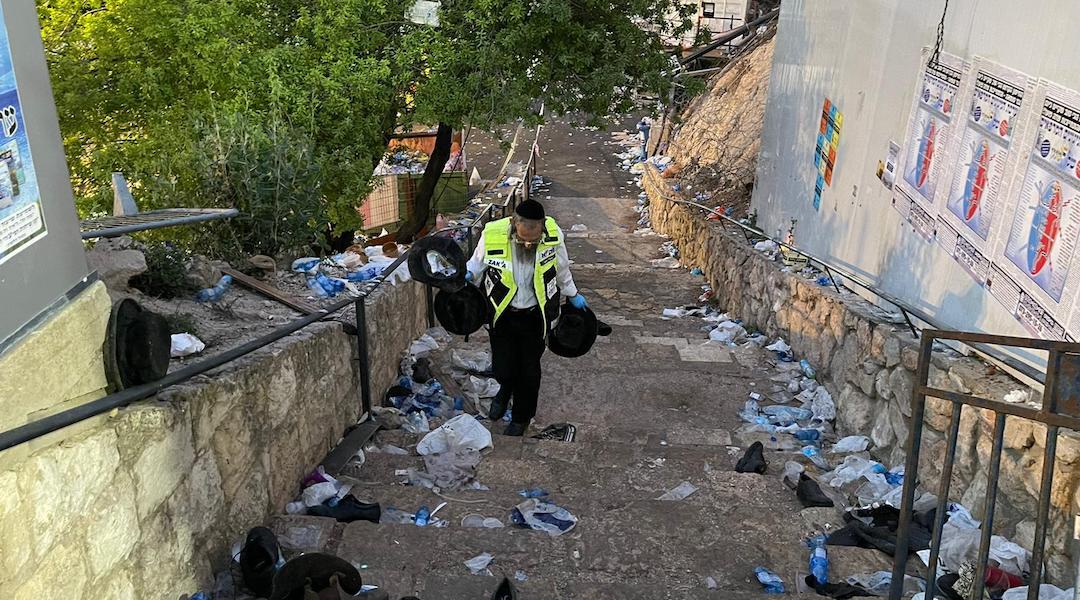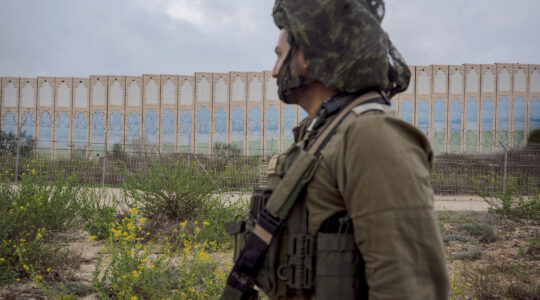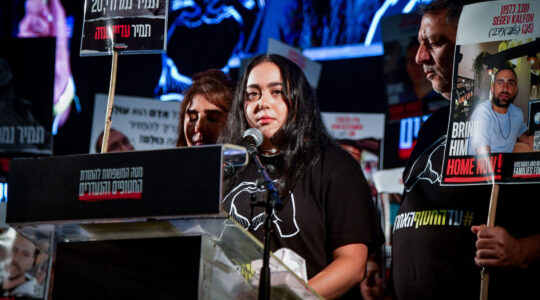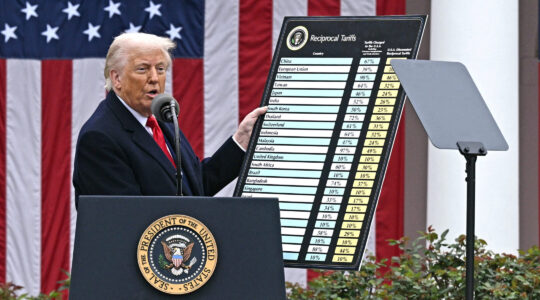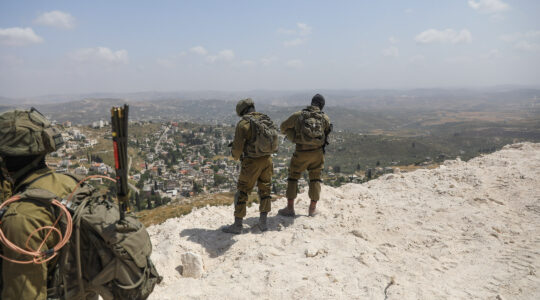(JTA) — The day after the deadly stampede at a religious festival in Israel on Thursday, the focus remained on identifying victims and allowing a shocked country, and global Jewish community, to grieve.
But the question of who or what is to blame already has begun to surface — and likely will be a subject of speculation and inquiries for years.
Israel watchers were already naming culprits: the dysfunction that underpins a country still endeavoring to reconcile diverse sectors that barely communicate, and an impatient seat-of-your pants, can-do attitude that at times produces miracles and at times catastrophe.
Other factors include a country eager to break free of pandemic restrictions and cultural phenomena that erupt into mass movements seemingly overnight.
Here’s a review of some of the cultural forces surrounding the stampede that killed at least 45 people at a Lag b’Omer celebration.
Deep societal divisions that hamper planning
Haredi Orthodox Jews had almost nothing to do with the state at its outset. That changed over the years as their leaders came to appreciate the miracle of a society that helped them replace the devastation wrought by the Holocaust on yeshiva communities, and also to understand the benefits of influencing government rather than ignoring it.
Haredi, or ultra-Orthodox, parties eventually made peace with roles in government, including Cabinet-level positions, and even with the settlement enterprise. A minority of the parties are slowly accommodating some military service. But huge gaps remain between the haredi and Zionist sectors, and the modus vivendi that has evolved is the majority Zionist establishment allowing the haredi sector to simply look after itself.
The tensions between letting a substantial minority run its own affairs and the unity that a society demands in a crisis were evident most recently in the difficulties for the government in persuading the haredim to be vaccinated or comply with pandemic restrictions.
The same disconnect meant that regulations that would normally be in place for a mass event like Lag b’Omer were absent, and the vetting that would normally accrue to public servants is less stringent.
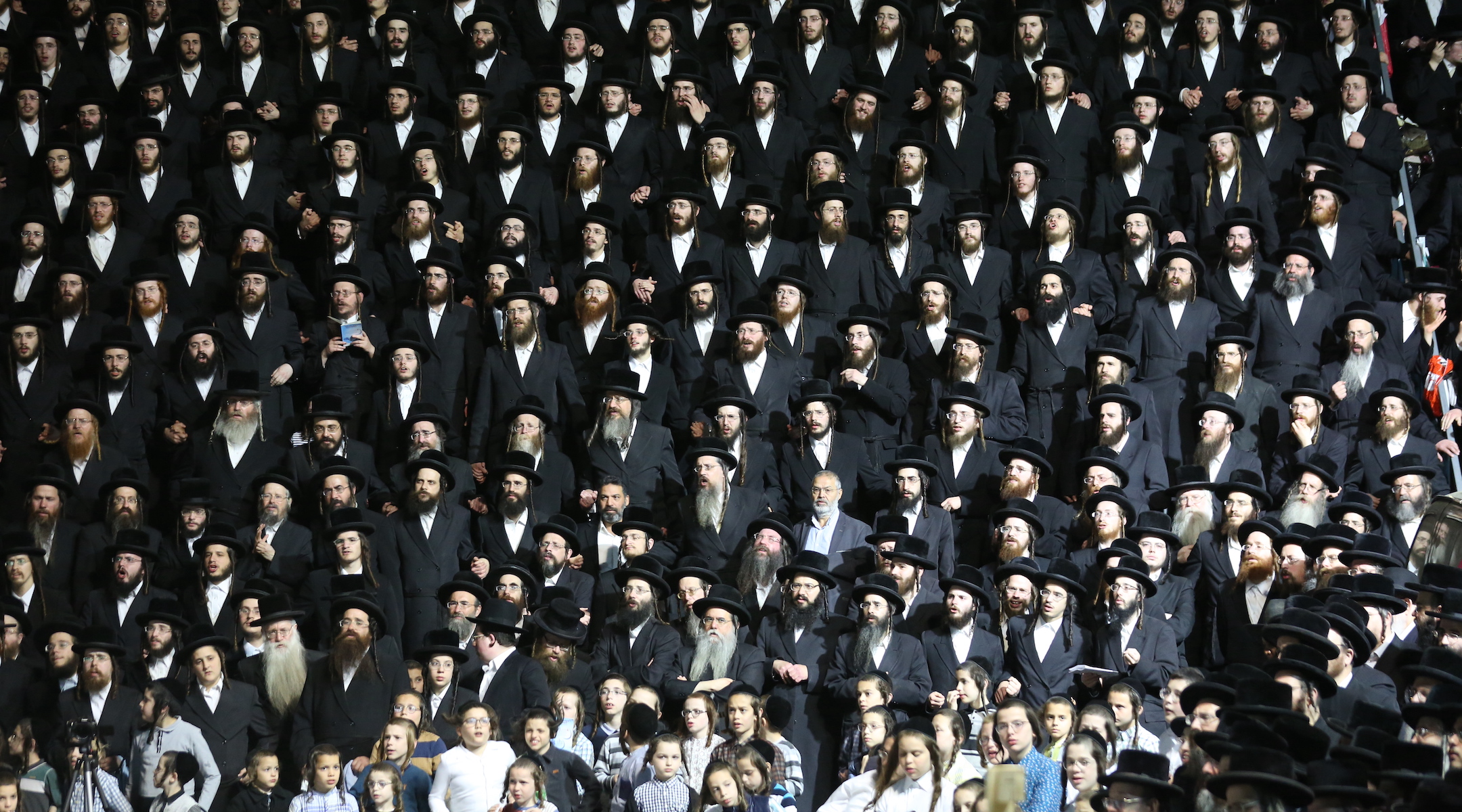
Followers of the Darag Hasidic dynasty seen in Meron, in northern Israel, ahead of the Lag B’Omer holiday, April 28, 2021. (David Cohen/Flash90)
Scott Lasensky, a professor of Israel studies at the University of Maryland, likened the haredi community to a tribe that has the wide latitude that comes with autonomy.
“They don’t have walls of separation, they have walls of autonomy, and religious communities in Israel, as you know, have huge degrees of autonomy,” he said, adding that in the inevitable stock-taking that will follow the mourning, there will be a debate about whether public authorities should be more involved in mass gatherings.
Yet to be seen is whether the tragedy brings the sectors closer together or drives them further apart.
Anshel Pfeffer, a Haaretz reporter who covers the haredi-secular interface, fumed on Twitter that the civil servant in charge of holy sites, Yosef Schwinger, is a political operative whose main qualification is his longtime closeness to Interior Minister Aryeh Deri and not a professional public servant who would have internalized a credo of keeping up to date on the latest safety precautions.
“Maybe this absolutely foreseeable disaster would have been prevented” with a professional in charge, he said.
An in-limbo government that can’t act decisively
Israel went to the polls on March 23 for the fourth time in two years and again the electorate was deadlocked. Five weeks later it’s not clear who will be prime minister.
The absence of a functioning government for so long inevitably means the public sector will suffer. Without a functioning government, budgets are not being passed. It also has created a cycle of perpetual negotiation.
Dan Arbell, a scholar in residence at the Center for Israeli Studies at American University, said that Prime Minister Benjamin Netanyahu and Amir Ohana, the public security minister who is his ally, were not going to clamp down on religious fervor at a time of delicate coalition negotiations.
Netanyahu and Ohana “kind of said, you know, ‘no limitations, no restrictions, that’s fine, no limitations’ on the people who are going to show up,” Arbell said.
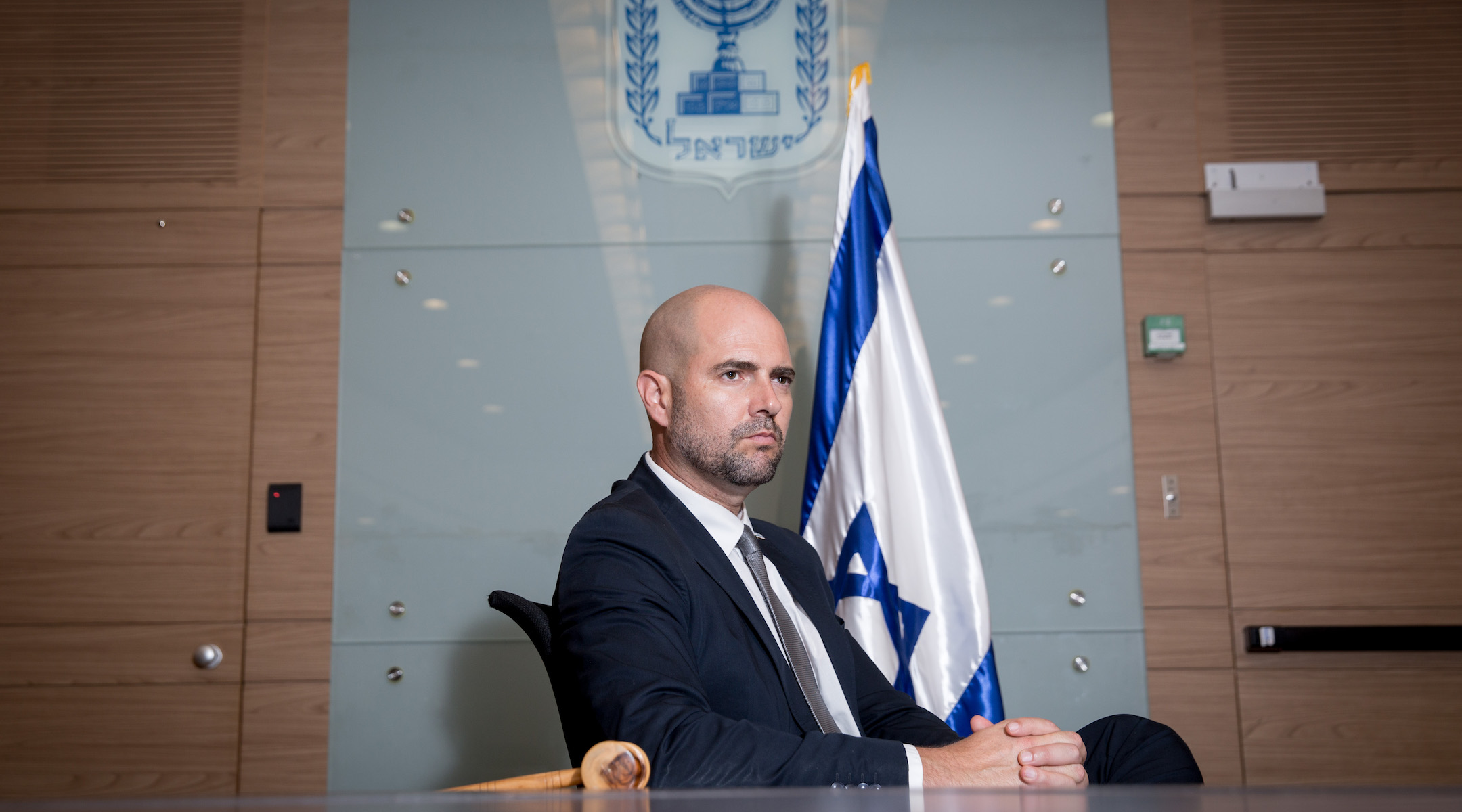
Amir Ohana, shown July 25, 2018. (Miriam Alster/Flash90)
Ohana appeared at the festival hours before the tragedy, effectively giving it his blessing.
“So there’s that incompetence,” Arbell said, “and then you have the regular incompetence of a government not functioning.”
A ‘yihiye beseder’ attitude that hinders learning from mistakes
Surrounded by enemies, weathering years of wars and terrorist attacks, Israelis have learned to move forward, sometimes without much reflection.
“There’s a national obsession with ‘hosen,’ with social resilience, picking themselves up and dusting themselves off,” Lasensky said. “But at the same time, there are Israelis who ask if there’s too much using tape and glue” instead of addressing the systemic problems that sometimes result in catastrophes.
Arbell described an attitude that he called “yihiye beseder,” a phrase that in Hebrew means “It will be OK,” that kicks in when deadlines loom and corners are cut.
He pointed to a series of disasters over the years that were followed by inquiries, and then seemed to slip from the national consciousness: the deadly collapse of the Maccabiah bridge in 1997, a deadly crush at a rock concert in 1995, the collapse of a Jerusalem wedding hall in 2001.
“It happens not because there’s no budget for infrastructure, but there’s a mentality of rushing, rushing, rushing,” Arbell said.
An eagerness to get back to full religious life
Arbell noted that the pandemic last year canceled the festival. Israel has led the world in vaccinations and recovery, and there appears to have been an eagerness to make up for the lost time.
“Because they missed it last year, they’re going to come and do it this year and make good on missing last year,” he said. “That kind of brought the numbers up.”
Growing up, Arbell recalled, the festival attracted people in the hundreds, not the hundreds of thousands. He said the larger crowds were not just a function of a growing haredi Orthodox community, but of how cultures — however siloed — bleed into one another.
“It became a thing to do” as mystical Judaism became popular among secular Jews. “It has a folkloric, cultural aspect to it, which draws many people, not just the religious.”
JTA has documented Jewish history in real-time for over a century. Keep our journalism strong by joining us in supporting independent, award-winning reporting.
